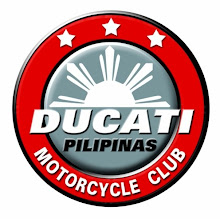
Supermoto is a cross-over or evolution of motocross and road racing. Races are commonly held on road racing or medium sized go-kart tracks with an off-road section in the infield. Most supermoto race tracks are typically configured with approximately 70% tarmac and 30% dirt with small jumps but a dirt section is not required. The motorcycles used are frequently custom-created combinations of off-road motorcycles and road-racing rims/tires, known as 'supermotard' bikes. Riders also wear a combination of road race and offroad equipment, normally leathers and a motocross helmet and boots. Unlike normal motorcycle racing, the emphasis lies on slower speeds—typically less than 100 mph (160 km/h)—short and twisty tracks, where rider skill matters far more than outright machine performance.
Supermoto has its origins in the 1970s where ABC’s Wide World of Sports was the highest-rated sports show in the United States. In 1979, ABC commissioned a made-for-TV event to be included in the series, named Superbikers, whose intention was to find the ultimate all-around motorcycle racer. Superbikers was then manifested as a yearly event run at southern California's Carlsbad Raceway. The show's tarmac-and-dirt courses were intended to draw on talent from the world's of off-road, flat-track and road-racing. World and National Championship-winning motorcycling greats such as Kenny Roberts and Jeff Ward, whose respective sports at the time were road-racing and motocross, participated in the races. The Superbikers quickly became a huge Nielsen ratings contender, running until 1985, at which point ABC was forced to cancel the show due to new management and cuts; its cancellation also initiated a long sabbatical of the sport in the USA. The European racers who participated in the sport at Carlsbad, however, brought it back to Europe with them, where it quickly gained popularity in countries such as France.
2003 signalled the resurrection of the sport in the United States with the birth of the AMA Supermoto championship and with the ESPN X-Games Supermoto championship.
Prior to the 1990s, supermoto bikes, including the precursor motorcycles used in Superbikers, were converted open-class two-stroke motocross or enduro bikes desired for their light weight and jumping abilities. The motorcycles currently used for Supermoto racing are predominantly single-cylinder four-stroke powered dirtbikes with 17 inch or 16.5 inch wheels. The 17 inch wheels allow the use of up to 5.5 inch wide superbike road racing slick tires. These are often hand grooved on the rear tire to facilitate slightly better acceleration on the dirt stretches of a supermoto course. Suspension is lowered and slightly stiffened in comparison with a stock dirt bike, and braking power is improved with oversize front brake rotors and calipers. Despite the lack of trees on supermoto courses, 'bark busters' (hand guards) are frequently added to supermoto bikes due the extreme cornering angles achieved by riders. Hand guards also greatly improve survivability of the brake & clutch levers during a fall making supermoto bikes highly crash resistant and often able to quickly re-enter the fray during a race following a crash.
In 1991, Italian manufacturer Gilera released the 'Nordwest' model, the first factory produced supermoto. Other European manufactures quickly followed suit, among them KTM, Husqvarna, Husaberg and CCM; all manufacturers whose emphasis were off-road models at the time. Models were developed for both track and road use. It took another ten years, until the mid 2000s for Japanese manufacturers, such as Yamaha (2004), Honda (2005) and Suzuki (2005) to start introducing supermoto models in the European market. Most of the supermoto bikes sold to the public are more domesticated models for road use rather than outright racing, for example the Suzuki DR-Z400SM. Slower and heavier but rock solid dual-purpose motorcycles such as the Kawasaki KLR650 are good examples of this. In the spring of 2006, Italian bike manufacturer Ducati announced their entry in the class with the Hypermotard machine, which has more in common with streetfighter-type motorcycles than realistically being considered a true supermoto bike capable of surviving jumps and crashes. KTM currently has available a 990 cc V-twin that could be described as the ultimate road going Hypermoto, and a brand new (and well appreciated) the single cylinder KTM690SM. Aprilia also has two 450 cc and 550 cc SXV V-twin track oriented supermotos for sale.
Due to the popularity, versatility, excitement and durability of these motorcycles, some owners modify them for street use. In order to do this, headlights, tail lights, horn, mirrors and street-legal tires among other occasional modifications are needed. Some state motor vehicle departments take a dim view of turning off-road bikes into street legal bikes. In Europe most Supermotos are sold street legal from the factory and later tuned for race use. Supermoto type bikes make excellent city-goers as their upright seating position provides great visibility in traffic. Their narrow frames and light weight also make them incredibly maneuverable, as well as easier to ride in twisty or less than ideal road conditions that make most sportbikes have to slow down.

No comments:
Post a Comment